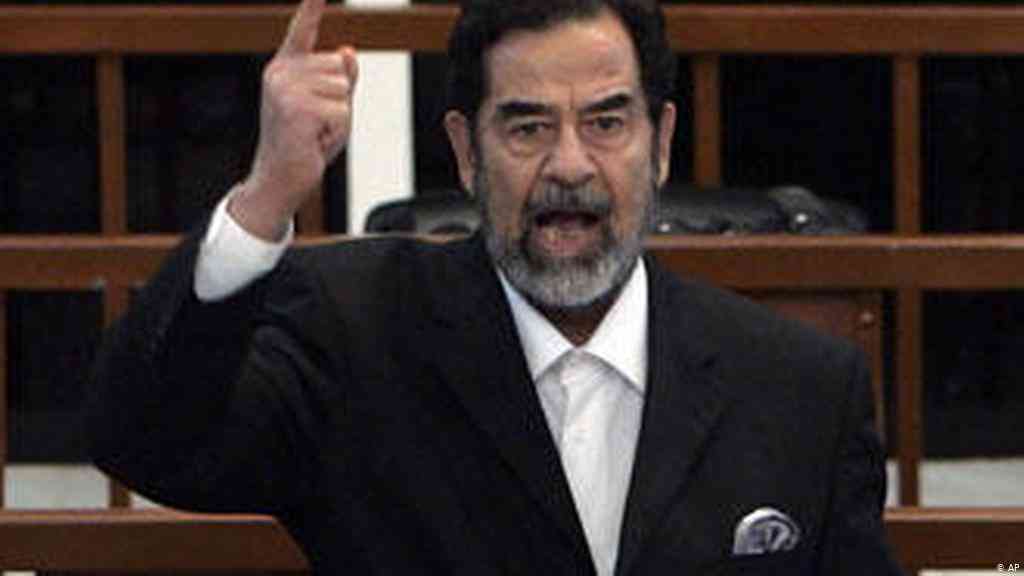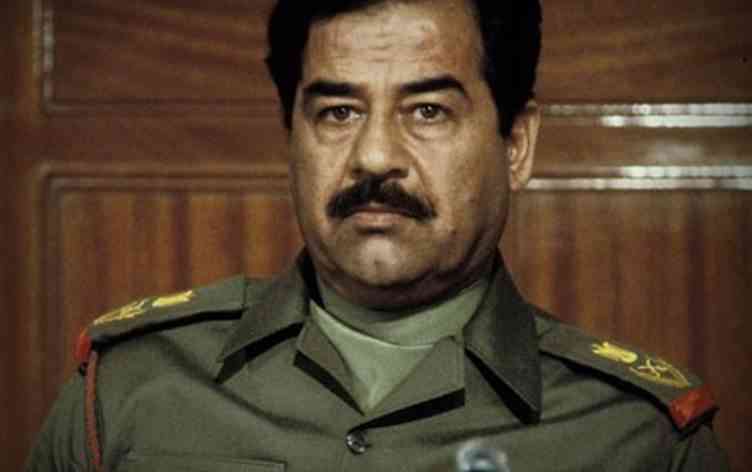The Baath Party came to power in Iraq in 1968 by their leader (Ahmed Hassan al-Bakr), and at that time, Saddam Hussein was the Vice President. He made extensive repairs and created strict security services in the middle of the cold war, and he was a good friend to the Soviet-Union. Saddam established the National Oil Company, which made the individual income of Iraqi people the most among all Arab countries. In 1974, a Kurdish rebel started in northern Iraq.
The Kurdish insurgency was being aided by Iran. Also, there was a border conflict between Iraq and Iran at that time. Saddam saw the chance to boost his reputation in Iraq, so he decided to make the Algiers Agreement in 1975 to stop the aid that came from Iran to Kurdish rebels. After one day of this agreement, the Iraqi forces succeed in capturing the mountain the Kurdish used to fight from, and Iran started to take back what they gave to the Kurdish rebels. After that, the Kurdish leader Mustafa Barazani announced the end of the Kurdish insurgency. After that, Saddam started to appoint his relatives at high ranks in the government, establishing the road for him to seize the authority. In 1979 he succeeded in taking power in becoming the president of the republic.
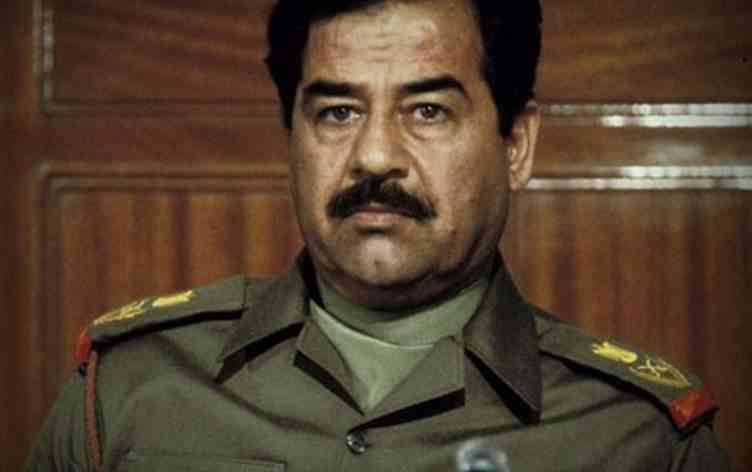
After that, he wanted to play the leading role in the middle east. So he established a good relationship with the Soviet-Union. But, after he purged the communists from Iraq, his ties went loose with Moscow. So he developed a new relationship with the west, especially France, with a good economic relationship. France in the '80s built the firs Iraqi nuclear reactor under the french name "Osirak" and Iraqi name "Tammuz 1," which were destroyed by the Israeli air forces. Israel suspected Iraq was going to start producing nuclear weapon materials, and Saddam threatened Israel. He said that he possesses chemical weapons and that he is capable of burning half of Israel if they attacked Iraq.
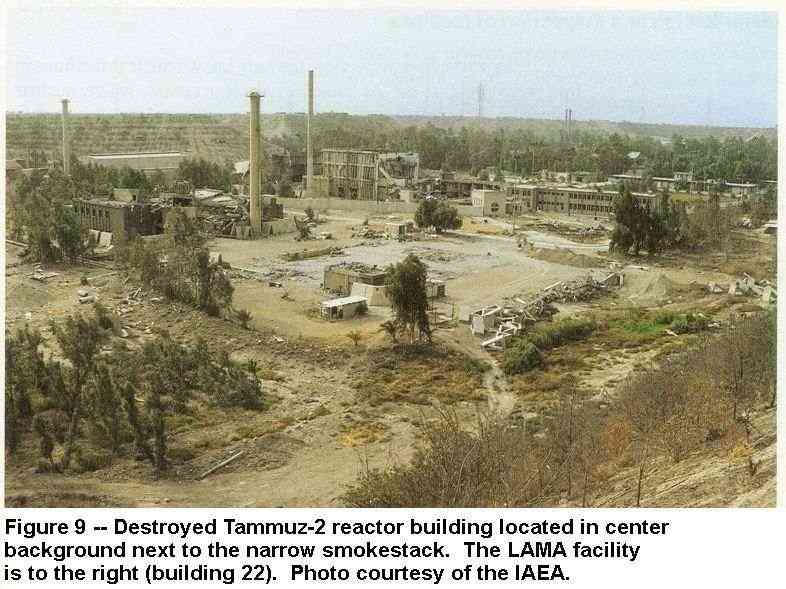
Iraq-Iran War: after the Islamic coup in Iran the Ruhollah Khomeini became the new Iranian Leader who has bad relation with Saddam Hussein after Saddam kicked him to Kuwait, when he came to power in Iran Saddam know that Khomeini will take his revenge from Iraq so he declared war on Iran lasted for 8 year with a massive casualties, in 1988 the Khomeini agreed to the national agreement to stop fire between to sides and he was ashamed of himself.
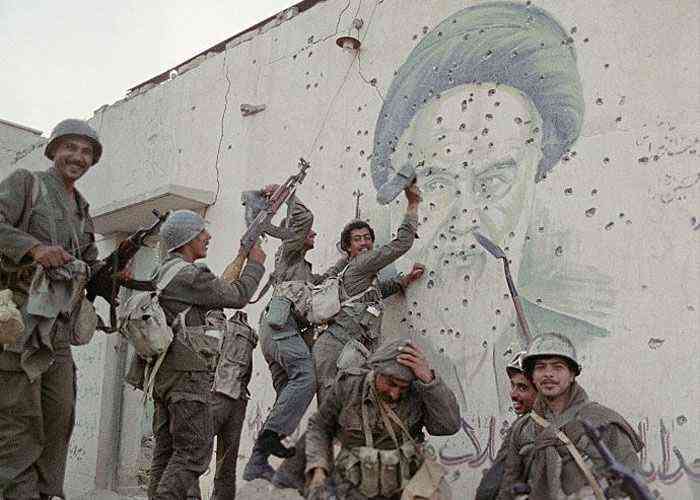
After the Iraq-Iranian war: After the war, the two countries had massive destruction to rebuild and massive economic struggles with a lot of economic sanctions on Iraq. The Economic losses are estimated at 452 billion Iraqi Dinar, so a new era of poverty had begun.

Iraq was in debt of hundreds of millions of dollars. The United Nations imposed economic sanctions on Iraq to weaken Saddam Hussein's regime. Despite this, the Iraqi economy began to grow, ignoring economic sanctions. Saddam and his party leader were rich in contrast with Iraqi people who were very poor.
Iraqi campaign against Kurdish people (Anfal genocide): Its military campaign against the separatist Kurdish people started in 1986 and lasted until 1989. The Iraqi regime destroyed more than 4500 Kurdish villages and the displacement of at least a million people, and thousands are killed. In the last days of the first gulf war, the Iranian forces captured the city "Halabja." Hence, the Iraqi troops marched towards the town and used chemical weapons, which killed more than 5500 Iraqi Kurdish people. Still, the Iraqi regime claimed that Iranian forces used this chemical weapon against Iraqi Kurdish people.
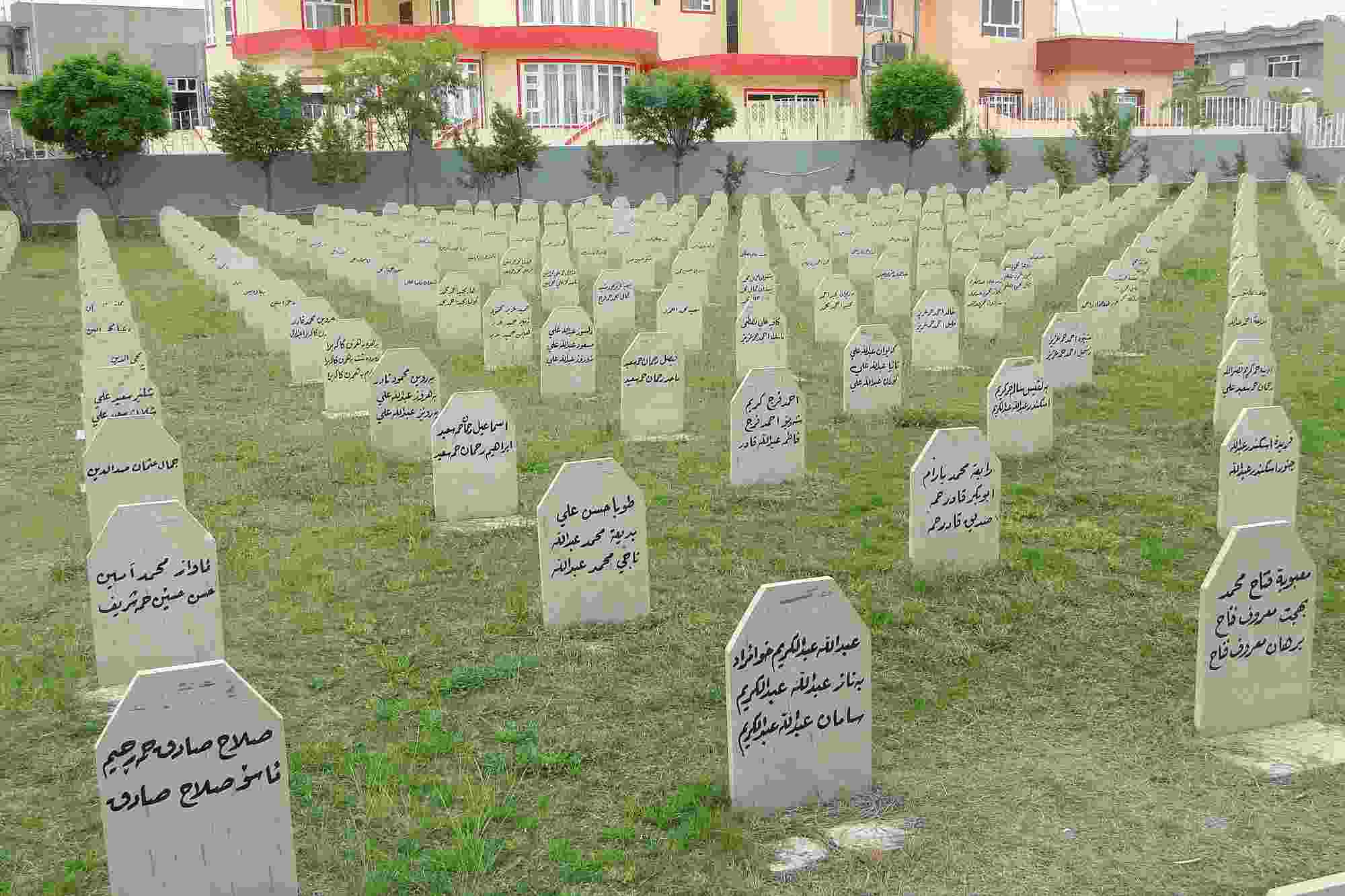
The Second Gulf War: In 1990, the Iraqi regime claimed that the Kuwait oil company is stealing oil from Iraq during the first gulf war. So the Iraqi forces started marching towards the Kuwait lands and successfully captured the Kuwait land and captured all the radio stations. Thousands of Kuwaiti people were arrested. Massive looting began by the Iraqi forces that covered all of Kuwait's facilities, from the simplest foodstuffs on the market shelves to sophisticated medical devices.
The Iraqi army committed many crimes in Kuwait. The Iraqi authorities, for propaganda purposes, installed a mock government under the name of the Republic of Kuwait lead by Alaa Hussein. And American forces began flowing to Saudi Arabia on August 7, 1990, and on the same day that Iraq declared its annexation of Kuwait and considered it the "nineteenth province." The size of the military buildup in Saudi Arabia reached 500,000 soldiers.
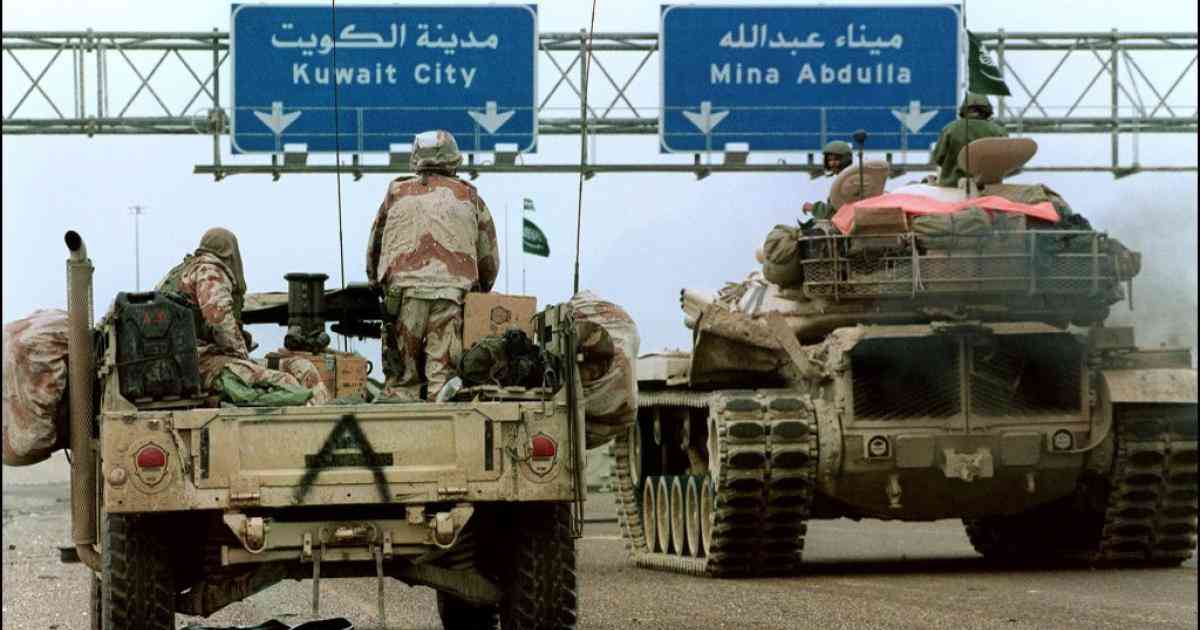
Several hours after the Iraqi invasion of Kuwait, Kuwait and the United States called for an emergency meeting of the Security Council and demanded the withdrawal of Iraqi forces from Kuwait. The Security Council passed a resolution imposing economic sanctions on Iraq. After the Kuwait invasion, Saudi Arabia began to express its concerns about the possibility of an attack on its lands.
This possibility played a significant role in the acceleration of procedures and alliances to protect Saudi oil fields as if Iraq controlled it, it would lead to consequences that the west was unable to bear. So, the United Nations and the USA decided to declare a liberation war against Iraq to release Kuwait from Iraq. At the beginning of the dawn of January 16 of 1991, one day after the end of the deadline granted by the Security Council to Iraq to withdraw its forces from Kuwait, Coalition Forces planes launched a massive and extensive air campaign that covered all of Iraq from north to south, conducting approximately 109,867 airstrikes during 43 days, with an average of 2,555 strikes a day.
During it, 60,624 tons of bombs were used, which resulted in the destruction of many infrastructures. On January 17 of the same year, President Saddam Hussein issued a statement on the Iraqi radio network announcing that "the mother of the battles has begun."
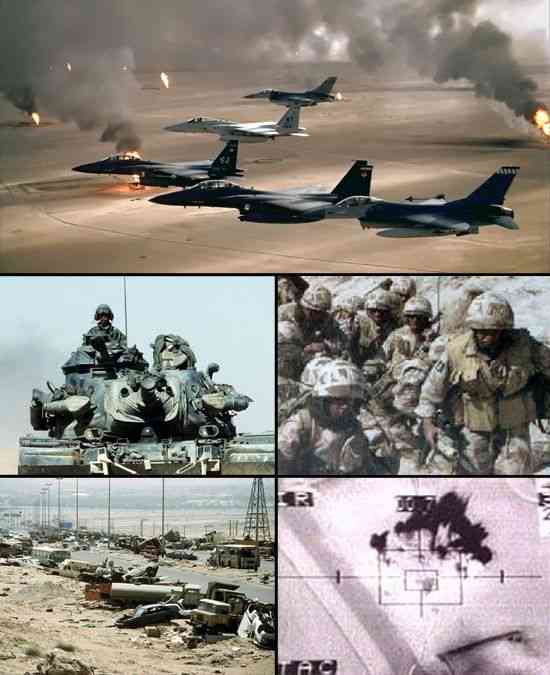
On 28 February 1991, the Iraqi forces retreat to Iraq land with a vast number of losses. After the war ended, the Iraqi army suffered from the destruction of its sectors, and the Iraqi government became weak in its weakest cases. All observers believed that the government of President Saddam Hussein would be overthrown. The US President indirectly encouraged the Iraqis to stage a revolution against the president, as he stated that the primary mission of the coalition forces was "The liberation of Kuwait" and that changing the political system in Iraq is an "internal matter."
A widespread grumbling began among the ranks of the withdrawing Iraqi army. It started the so-called Iraqi uprising of the year 1991 when an unknown soldier aimed his tank's mouth at one of President Saddam Hussein's pictures in one of the main squares in the city Basra This incident was considered by some as the first spark of the uprising that prevailed in southern Iraq and was followed by the northern regions. Still, the Republican Guard units and some of the leaders of the Iraqi army remained loyal to the Iraqi president and quickly put down the fire of the uprising.
The second Gulf War also resulted in the destruction of Iraq’s infrastructure, army, and Republican Guard, which was considered one of the strongest militaries in the region. Its severe isolation was imposed on those countries following the decision of the United Nations to impose stifling economic sanctions that continued for thirteen years, which the country suffered severely.
The siege also led to the migration of more than 23 thousand Iraqi researchers, doctors, and engineers, after the per capita wages decreased to more than half. The blockade was accompanied by high rates of child mortality and malnutrition and low educational attainment rates. More than 4,500 children per month have died from malnutrition and disease, according to UNICEF estimates.
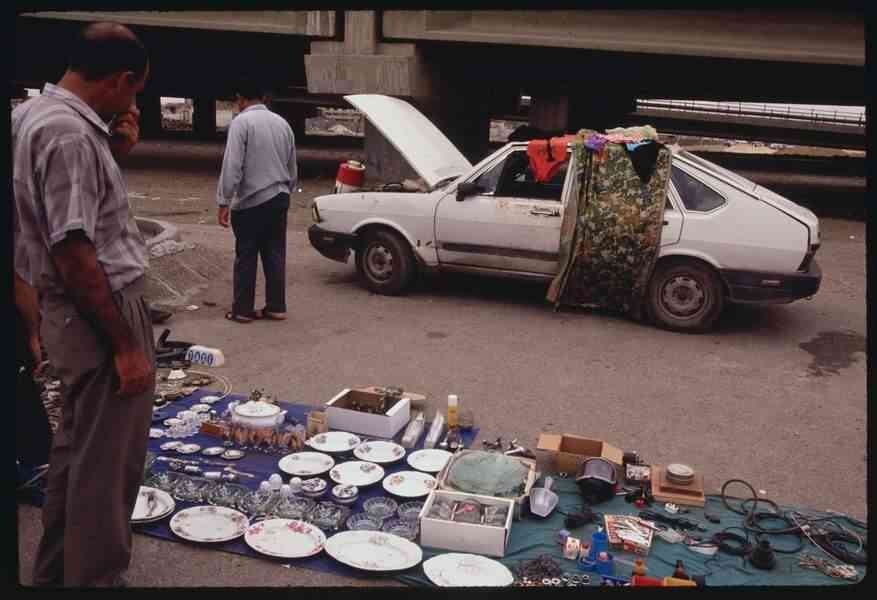
In March 1991, in the Shiite-dominated revolts in southern Iraq that involve the Iraqi army forces morale and anti-government Shiite parties. Another wave of insurgency erupted shortly after that in populated Kurdish northern Iraq. However, it presented a serious threat to the Iraqi Ba'ath Party regime, Saddam Hussein managed to suppress the rebellion with massive and indiscriminate power and maintain power.
It was cruelly crushed by loyal forces led by the Iraqi Republican Guard and successfully terrorized the population. In a few weeks, dozens of unrest have killed thousands of people. Many more were killed in the following months, while nearly two million Iraqis fled their lives. In the aftermath, the government stepped up the forced relocation of the Marsh Arabs and the draining of the Iraqi Marshes.
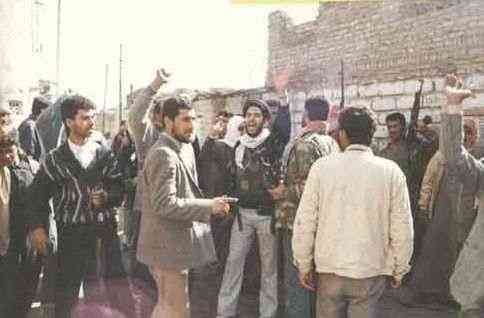
Saddam Hussein was internationally condemned for using chemical weapons during the 1980s campaign against Iranian and Kurdish civilians during and after the first Gulf War. In the 1980s, Saddam continued to work on a broad biological weapons program and nuclear weapons program, although no atomic bomb was made. After the second Gulf War (1990-1991), the United Nations (together with the Government of Iraq) located and destroyed vast quantities of Iraqi chemical weapons and related equipment and materials. Iraq suspended its chemical, biological, and nuclear programs.
For most of 2002 and 2003, the United States government continued to advocate "regime change" in Iraq. It threatened to use military force to topple the Iraqi government unless Iraq rid itself of all weapons of mass destruction that it was supposed to possess, and the United Nations was convinced that it had done so.
The Bush administration began its military build-up in the region and after it vehemently pushed for UN Security Council Resolution 1441. Chaired by Hans Blix, head of the United Nations Monitoring, Verification and Inspection Commission (UNMOVIC), and Mohamed ElBaradei, director-general of the International Atomic Energy Agency, the resolution restored the return of weapons inspectors to Iraq in November 2002.
The inspectors began visiting sites suspected of producing weapons of mass destruction. Still, they found no evidence of such activities, except 18 unspoken 122 mm lead-free chemical missiles that were destroyed under the supervision of the commission.
On March 7, 2003, Hans Blix announced the acceleration of Iraqi cooperation to destroy weapons of mass destruction and that it would take several months to get rid of them.
US President George W. Bush and British Prime Minister Tony Blair met in the Azores to hold an emergency summit over the weekend between 15 and 16 March 2003. After that, Bush announced that despite Blix's report, diplomacy failed to compel Iraq is to comply with the United Nations inspection requirements and declared its intention to use military force to attack Iraq, in what was, according to the Bush administration, to comply with the risk of "serious consequences."
The American administration presented before, during, and after the fall of the previous regime in Baghdad on April 9, 2003, a set of justifications to convince the American and international public opinion of the legitimacy of the war. These justifications can be summarized as follows:
1-The government of former Iraqi President Saddam Hussein continues to manufacture and possess "weapons of mass destruction" and the failure of the Iraqi leadership to implement 19 UN resolutions regarding giving full data on its arsenal of "weapons of mass destruction." It is noteworthy that to date, no "weapons of mass destruction" have been found in Iraq, but that the weapons inspectors' results confirmed that Iraq does not possess weapons of mass destruction once and for all.
2-The possession of the government of former President Saddam Hussein about relations with al-Qaeda and other "terrorist" organizations that pose a threat to the security and stability of the world. A claim that was not proven by any evidence.
3-Spreading democratic ideas in the Middle East, albeit with military force, and changing the official systems of states.
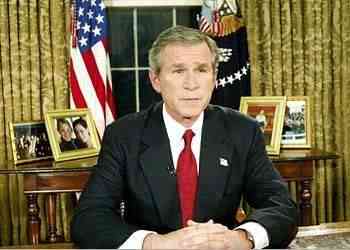
On March 20, 2003, at 02:30 GMT, which is 90 minutes after the deadline given by George W.. Bush told Saddam Hussein and his two sons to leave Iraq, the sound of explosions in Baghdad was heard. 45 minutes later, the American President said that he had issued orders to direct the "strike of opportunity," which he later learned was a strike that targeted a house Saddam Hussein was believed to be in.
The leaders of the American army relied on the element of surprise. So the prevailing expectation was that the ground campaign would precede an air campaign, as happened in the second Gulf War, so the element of surprise here was the start of the campaigns in that one and very quickly called it "shock and intimidation" Shock and Awe. The American army said that by targeting and eliminating the Iraqi leadership, the Iraqi people will organize for the campaign, and the goal will be achieved with minimal losses.
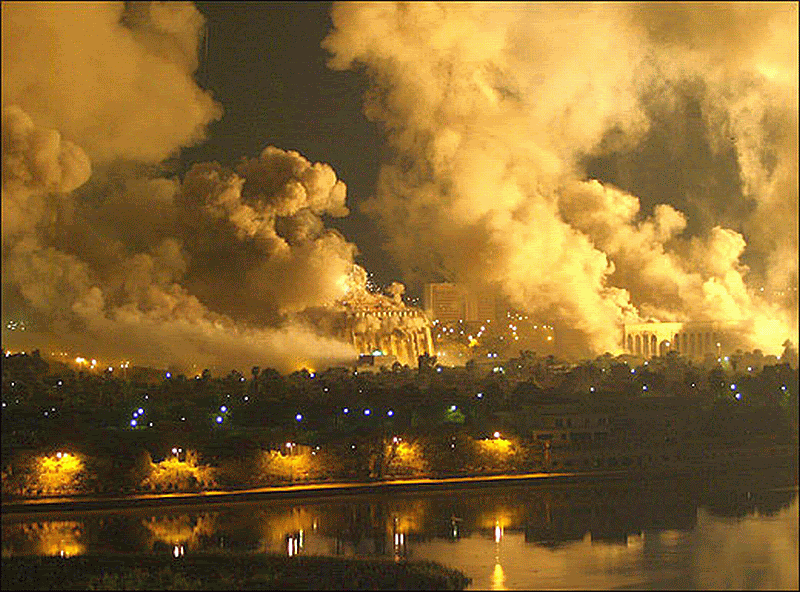
The American forces surrounded the city of Basra for two weeks before storming it, as it was relied on that the American military siege would weaken the morale of the Iraqi army. The American forces managed to attack the city quickly and without resistance from the Iraqi troops, and the American control of Basra took place on March 27, after destroying 14 Iraqi tanks. On April 9, Iraqi forces collapsed and fled in the city of Amara.
Meanwhile, in northern Iraq, a group of American special forces parachuted into north of Iraq. Because the Turkish parliament did not allow the use of Turkish territory to enter Iraq and these American special forces, with the support of the American Air Force and with intelligence support from Kurdish parties, destroyed strategic points.
Three weeks after the start of the ground campaign, American forces began moving towards Baghdad. The initial expectation was that the American armored forces would besiege Baghdad and conduct a street war in Baghdad with the support of the American Air Force. On April 5, 2003, a group of 29 American tanks and 14 Bradley armored vehicles launched an attack on Baghdad International Airport. This force was met with slight resistance by some Iraqi soldiers who were trying to defend the airport. The American troops met several suicide operations for Al Qaeda, including two operations. They were carried out by two Iraqi women who had announced their intention to carry out a martyrdom operation on Iraqi TV.
On April 7, 2003, another armored force launched an attack on the Republican Palace and was able to install a foot in the Palace. Hours later, complete breakdowns of the Iraqi regime’s institutions occurred, and the Iraqi army disintegrated and fled.
On April 9, 2003, the US armed forces announced that they would control all Iraqi lands. News agencies reported scenes of a small crowd trying to topple a statue of former Iraqi President Saddam Hussein in the middle of a square.
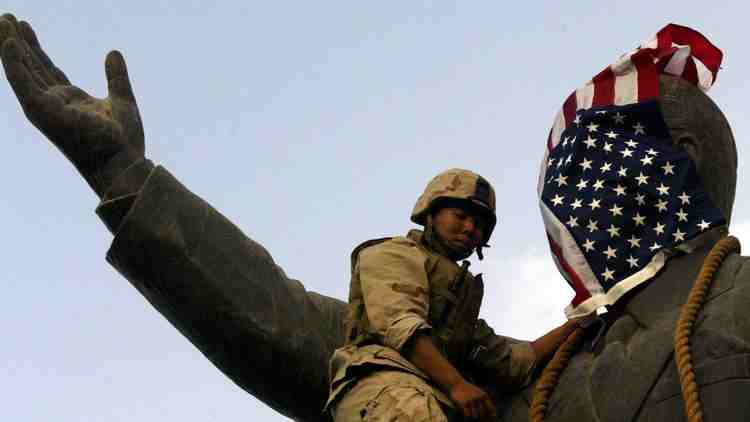
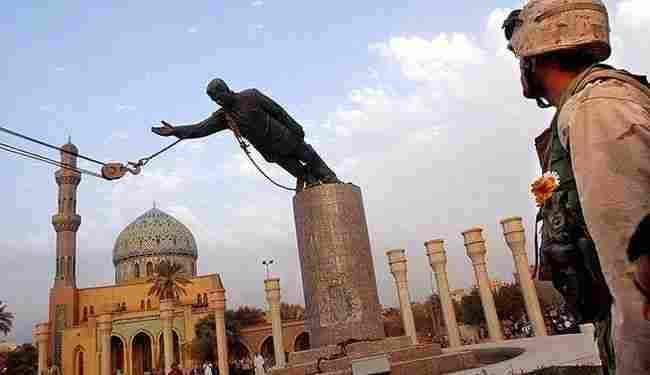
Operation Red Dawn or the capture of Saddam Hussein is the military operation in which Saddam Hussein was captured in the basement where he was hiding, by the US coalition forces in December 2003.
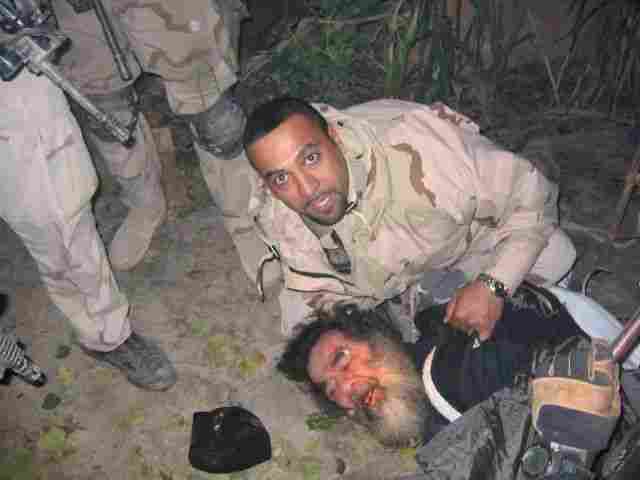
Saddam Hussein was brought to trial, and after investigations, he and some of the leaders of the former Iraqi regime were sentenced to death by hanging.
